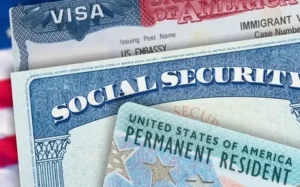Inflation continues in the USA, much like in the rest of the world. Every American feels the rising prices on their wallets monthly. Economists cite several reasons, one being the global crisis. However, the average American is concerned about their own wallet, not the “global” situation
A pleasant note is that price growth in May slowed slightly compared to the beginning of the year. Analysts attribute this to the decision to maintain interest rates at their highest level in 23 years. According to the US Labor Department, prices rose 3.3% year-over-year to the end of May, 0.1% lower than the previous month.
Core inflation, excluding volatile items like food and energy prices, also slowed despite continued rent increases, affecting household budgets. Despite high borrowing costs, the Federal Reserve held off on cutting interest rates this month. The US central bank maintained the target rate range at 5.25% – 5.5%.
What Costs More
Americans continue to feel the rise in rent and electricity prices, while food inflation remains around 2%. The rate of inflation for other goods and services varies. For example, transport costs, like taxi rides, rose by more than 10% year-over-year to May, while used car inflation fell by almost 10%.
Cheaper Food, More Expensive Medicine
Some major American retailers, including Target, have reduced prices on items like food and baby products to attract customers. The price of milk in supermarkets fell by 1.3%, and prices for non-alcoholic beverages also decreased. Fruit and vegetable prices remained unchanged. Rent increased by 0.4%, matching April’s rise, while healthcare costs rose by 0.5%. Prescription drug prices increased by 2.1%, and hospital service costs also rose by 0.5%.
Prices and Elections
The economic situation in the USA is particularly important ahead of the presidential election on November 5. The inflation rate appears to be affecting the popularity of US President Joe Biden, as Americans continue to feel financial pressure.
Interest Rate Forecasts
Interest rate forecasts for this year are divided: four officials did not expect a cut, seven predicted one cut, and eight thought there would be two cuts. Following the publication of inflation data, traders increased bets on a rate cut in September and added bets on a second cut in December. The inflation rate was lower than some economists’ expectations, increasing the likelihood of a rate cut this year, although it remains above the US central bank’s 2% target.















